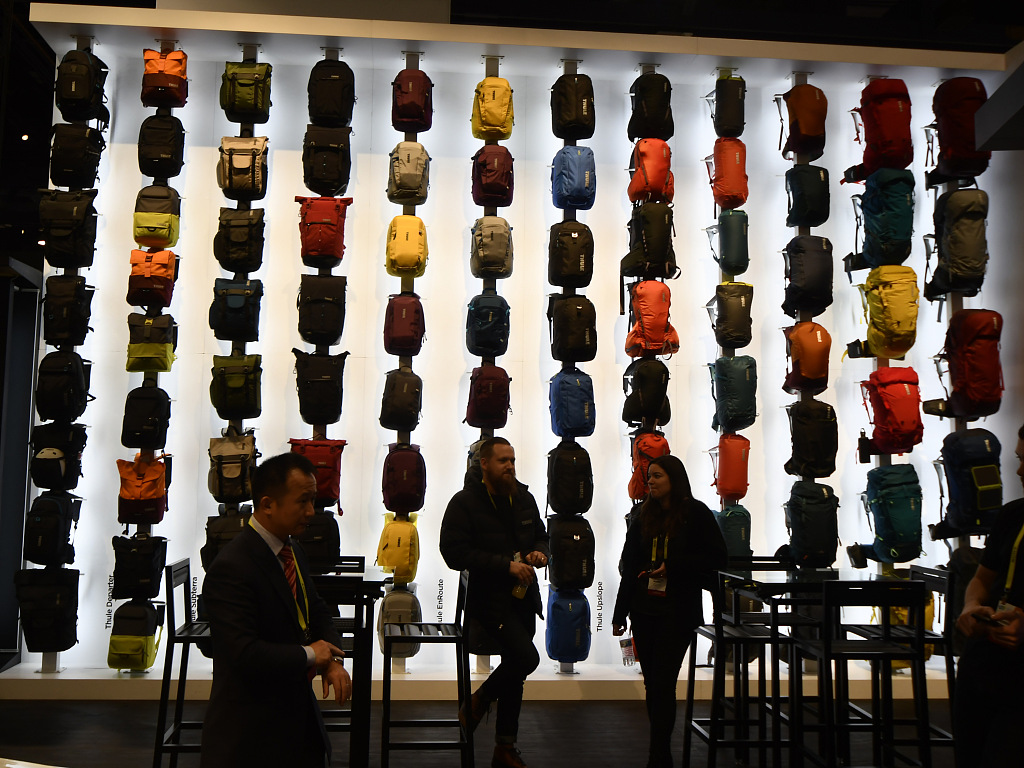Outdoor recreation industry urged to unite to fight tariffs


Interest in the United States in pursuing active lifestyles could be dented by increased prices for outdoor and sporting goods after the government raised tariffs on virtually all imported Chinese-made products.
Ranging from hats, gloves and football helmets to backpacks, sports bags, kayaks and camping chairs, everyday items from China were already subject to a 10 percent tariff imposed in September. This month, the rate was raised to 25 percent.
The US administration has also proposed another 25 percent tariff targeting a further $325 billion in Chinese imports, including clothing, footwear, tents, sleeping bags, snowboards and other sports equipment.
Rich Harper, manager of international trade at the Outdoor Industry Association, said, "In other words, everything that has not yet faced a punitive import tariff is now on the list."
The list he referred to is the fourth round of tariffs proposed by US government since the first were introduced in July.
This latest round would deliver a devastating blow to the $887 billion outdoor recreation economy and the 7.6 million US jobs it supports, the OIA said.
The Sports and Fitness Industry Association also said the government's action will be "potentially destructive" to its $92.3 billion industry.
Harper said during a recent internet seminar: "This is an all-hands-on-deck moment. Only together can we push back against these tariffs."
He urged companies in the sports and leisure industry to submit comments on the fourth round of tariffs and to testify at a public hearing that will start in Washington on June 17.
"It's important that they hear from you and (learn) the individual impact that the tariffs will have on your business," Harper said.
The period allowed for public comment will end seven days after the last day of the public hearing, which will likely run through the end of June, Harper said.
The OIA warned its members to be prepared for the latest round of tariffs to take effect as early as mid-July.
Tariffs that have been imposed have led to price increases for customers and lower margins for Salewa North America, a Colorado company that imports and sells products ranging from skiing gear and clothing to footwear and climbing equipment.
The company pays the 10 percent additional tariff on accessories in its apparel line such as headbands, hats and beanies.
Like Salewa North America, many companies have had to absorb such costs or pass them on to consumers, as pricing structures for orders could not be altered when the 10 percent tariffs took effect in October.
Harper advised companies to start looking at other possible sourcing options. "Even if there's an agreement (between the US and China) in place," he said.
However, he added that there are no viable sources other than China in many cases, citing, for example, that 98.9 percent of imported down sleeping bags in the US come from China.
Keen, a shoe company in Portland, Oregon, produces or sources material in China for some 70 percent of its work boots. The tariffs have raised the company's overall costs, and consequently the prices customers pay for its boots.
Harper said: "It takes time, investment and training to shift supply chains. China still dominates and can be the only option."
Tom Cove, the Sports and Fitness Industry Association president and CEO, said in a statement: "China currently represents one of the most important production source countries for the industry, with companies from every sector producing goods to be sold in the American market. We fear a particular threat to small and medium-sized companies who have less capacity and market power to make dramatic shifts in real time."
He said this is the "farthest-reaching" and "most damaging" trade policy the sports and fitness products industry has faced.
According to the 2019 SFIA Manufacturers' Sales Report, the industry grew by 2.3 percent last year, totaling $92.3 billion, with athletic footwear the fastest-growing area, at 4.6 percent.
An SFIA report released in February said participation in sports and outdoor recreation remains strong across the US, especially cycling, camping and hiking, reflecting interest in an "active lifestyle" and sharing time with family.
Compared with companies, the situation is doubly worse for US consumers who will face hefty price rises and a reduced choice of sporting and outdoor goods, the SFIA said.
Alli Schulman, SFIA spokesman, said, "We expect to see an increase in consumer prices later in the year."
A new study titled Return to Protectionism by a team of economists at the University of California-Berkeley, Columbia University, Yale University and the University of California-Los Angeles said the US tariffs on imported products have been passed almost entirely on to consumers and businesses - "essentially a sales tax paid by US purchasers".
The study found that the tariffs have cost $7.8 billion in lost GDP.
- US tariffs on Chinese goods almost entirely borne by US importers, says IMF study
- German family business company disturbed by US-China trade tensions
- Commerce ministry calls on US to stop tariff plans
- Experts: 'Rational' for China to oppose tariffs
- US threatens to impose tariffs on EU products over aircraft subsidy dispute




































